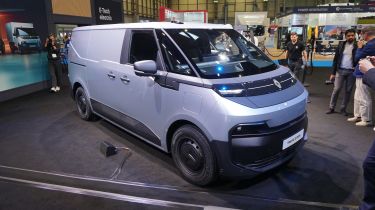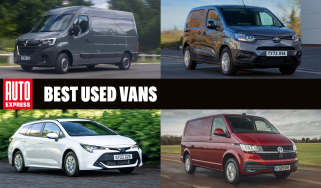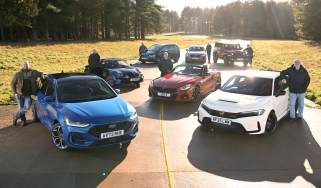New Renault Trafic, Goelette and Estafette vans make CV Show debut
All three Renault vans are all-electric - sitting on a new architecture developed by Ampere
The Commercial Vehicle Show in Birmingham has been given a new lease of life with some major launches, and chief among them is the unveiling of a new Renault Trafic. We’ve seen the model already, but Renault has brought the van to the CV Show for its world debut, as well as its Goelette open-bed and Estafette box van variants.
All three are based on the new SDV (Software Defined Vehicle) architecture, which has been created by Renault Group’s Ampere sub-brand. There’s a ‘skateboard’-style platform underneath, and while battery sizes haven’t been confirmed, Renault claims a range of up to 280 miles, while charging speeds are fast enough to get the battery from 15-80 per cent capacity in 20 minutes.
Renault’s new electric platform is designed to be flexible, and it has produced these three variants to demonstrate exactly that. All have matching lower bumpers, but carry their own unique design. The Trafic E-Tech has a substantially different exterior design to the current model, with a light-up badge, thin LED headlights and narrow vertical lights to the rear, while plenty of black cladding and sharp creases feature. All four wheels have been pushed as far as possible to each corner to improve load-carrying capabilities - although Renault claims that the Trafic’s 10.3-metre turning circle is the same as that for a Clio supermini.
Two battery options are available, with the long-range version featuring an energy-dense nickel manganese cobalt pack, while a smaller (and cheaper) lithium iron phosphate battery can deliver a range of 217 miles. A single electric motor is fitted and this produces 201bhp and 345Nm of torque, while vehicle-to-load tech can power tools and equipment, and vehicle-to-grid can send power back to the network.

The Trafic E-Tech will come in L1 and L2 sizes, with cargo volumes of 5.1 and 5.8 cubic metres respectively, while a roof height of 1.9 metres means access to multi-storey car parks should be easy. Inside, the cabin features plenty of storage and hard-wearing recycled materials, while a 12-inch touchscreen and 10-inch driver’s display are used and include the latest connected services.
The Goelette uses the same basic platform and structure as the Trafic, but it’s a chassis cab variant that can be fitted with a variety of bodystyles. The name comes from an open-bed lorry that Renault offered in the sixties and seventies, so that’s the look for the show model. Other configurations include a box van and a tipper, while Renault says that the chassis can take up to 1.4 tonnes in weight. A wide range of conversions will be offered either direct from the factory or via Renault’s Qstomize network of conversion specialists.
The Estafette gets its name from various Renault commercial vehicles from the past; the box van is 5.27 metres long, 1.92 metres wide and 2.6 metres tall, and has a vast cargo volume of 9.2 cubic metres. Its look is influenced by the Estafette concept revealed last year, while the production model has the same front end as the Trafic. It has sliding side doors and a roller shutter at the rear, and allows occupants up to 1.9 metres tall to move around the interior easily between the cockpit and cargo area. In a nod to busy delivery drivers, the sliding side doors can be opened with your elbow, according to Renault, making it easier to climb aboard with your hands full of packages.
More details will be announced ahead of all three vans going on sale in 2026, although Renault has confirmed that the new models will be built in northern France at its Sandouville plant, where the current Trafic is assembled.
Check out our list of the best electric vans...
Find a car with the experts









